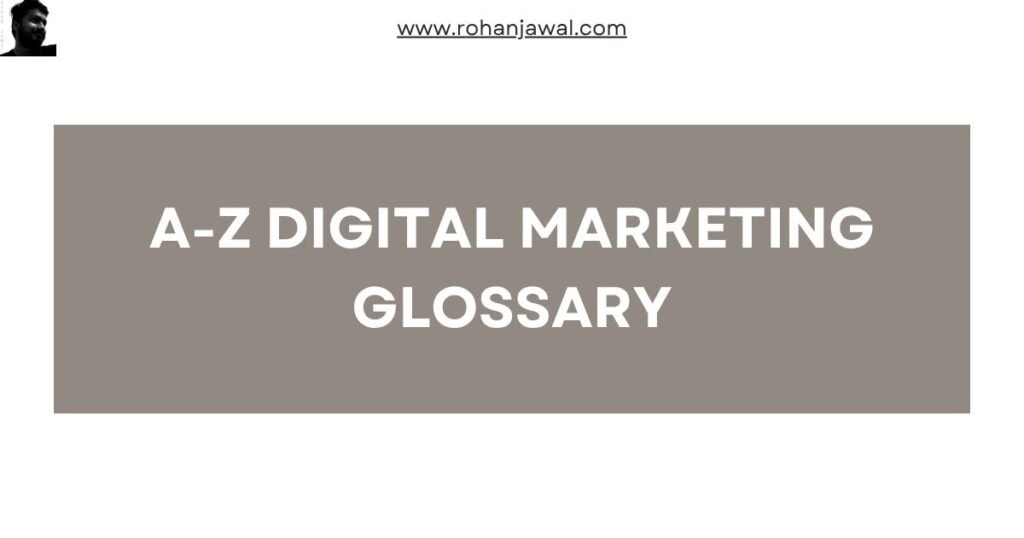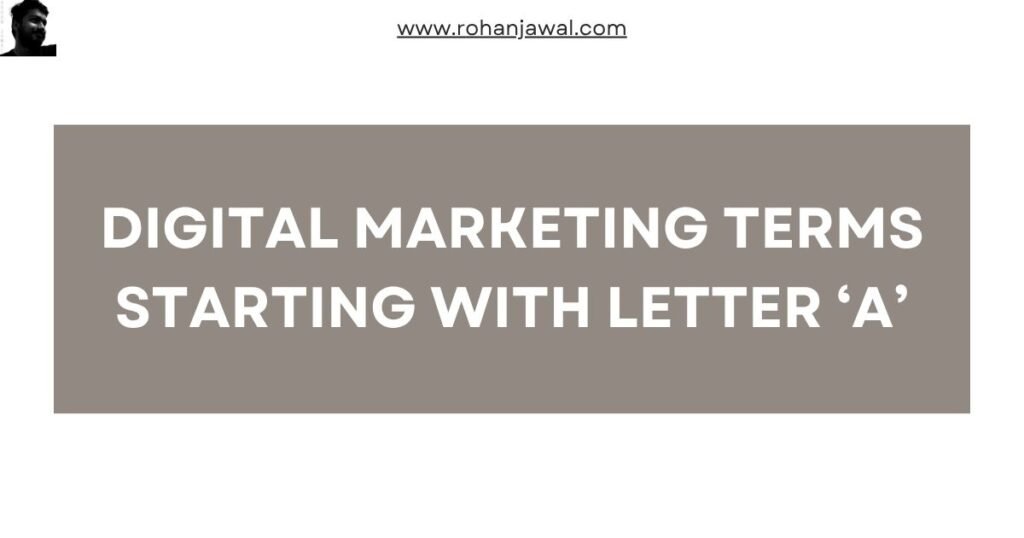The world of digital marketing is full of buzzwords and technical terms. To make them easier to understand, we’re continuing our A to Z glossary—this time with key terms starting with the letter “D”.
From Dark Social to Duplicate Content, these concepts help marketers track engagement, optimise performance, and improve SEO. Let’s break them down with clear explanations and real-world examples.
1. Dark Social
What is Dark Social?
The private sharing of content through channels like messaging apps, email, or DMs—often difficult to track in analytics.
Brief Explanation of Dark Social
It’s like word-of-mouth in the digital world—people share links privately, making it harder for marketers to know the source.
Example of Dark Social
Someone copies your blog link and shares it in a WhatsApp group. The traffic shows up as “direct” in analytics, but it actually came from sharing.
Related Words to Dark Social: Private sharing, referral traffic, tracking challenges, invisible traffic
2. Data-Driven Marketing
What is Data-Driven Marketing?
Using analytics and customer data to guide marketing strategies.
Brief Explanation of Data-Driven Marketing
Instead of guessing, you make decisions based on real numbers and insights.
Example of Data-Driven Marketing
An e-commerce site uses purchase history to recommend products and boost conversions.
Related Words to Data-Driven Marketing: Analytics, personalisation, customer insights, performance tracking
3. Demographics
What are Demographics?
User characteristics like age, gender, income, and location used for audience targeting.
Brief Explanation of Demographics
Think of them as the “basic profile” of your customers—who they are and where they come from.
Example of Demographics
A campaign targets women aged 25–40 in urban cities who earn above a certain income level.
Related Words to Demographics: Segmentation, audience targeting, psychographics, market research
4. Display Advertising
What is Display Advertising?
Visual ads (banners, videos, or images) shown on websites, apps, or social media.
Brief Explanation of Display Advertising
It’s like placing a digital poster on popular websites to grab attention.
Example of Display Advertising
A travel company runs banner ads for flight discounts on news websites.
Related Words to Display Advertising: Banner ads, impressions, CPM, visual marketing
5. Domain Authority (DA)
What is Domain Authority?
A score (0–100) developed by Moz that predicts how likely a website is to rank on search engines.
Brief Explanation of DA
It’s like a “reputation score” for your website—the higher it is, the stronger your SEO potential.
Example of DA
A blog with DA 80 will usually outrank a smaller site with DA 20 for the same keyword.
Related Words to DA: SEO score, backlinks, authority sites, ranking power
6. Drip Campaign
What is a Drip Campaign?
An automated series of emails sent over time to nurture leads or customers.
Brief Explanation of Drip Campaign
It’s like planting seeds and watering them regularly until they grow into customers.
Example of Drip Campaign
A new subscriber gets a welcome email, followed by product tips, then a discount offer.
Related Words to Drip Campaign: Email automation, lead nurturing, follow-up sequence, marketing funnel
7. Dynamic Ads
What are Dynamic Ads?
Ads that automatically change their content based on user data, preferences, or behaviour.
Brief Explanation of Dynamic Ads
It’s like a personalised shop window that adjusts to what each customer likes.
Example of Dynamic Ads
After browsing a laptop online, you see personalised ads showing the same model with a discount.
Related Words to Dynamic Ads: Personalised ads, retargeting, programmatic advertising, customisation
8. Dwell Time
What is Dwell Time?
The amount of time a user spends on a webpage before returning to the search results.
Brief Explanation of Dwell Time
It shows how engaging or useful your content is—the longer they stay, the better.
Example of Dwell Time
If users spend 3 minutes on your blog post before leaving, that’s a good dwell time compared to just 10 seconds.
Related Words to Dwell Time: Bounce rate, engagement, session duration, on-page SEO
9. Direct Traffic
What is Direct Traffic?
Visitors who reach your site by typing your URL directly or from untracked sources.
Brief Explanation of Direct Traffic
It’s like someone walking straight into your shop without directions.
Example of Direct Traffic
A user types “www.brandname.com” into their browser instead of clicking from search or social media.
Related Words to Direct Traffic: Analytics, attribution, organic traffic, referral traffic
10. Duplicate Content
What is Duplicate Content?
Identical or very similar content appearing on multiple webpages.
Brief Explanation of Duplicate Content
Search engines get confused about which version to rank, which can hurt SEO.
Example of Duplicate Content
A product description copied word-for-word across different retailer websites.
Related Words to Duplicate Content: Canonical tag, SEO issues, plagiarism, content originality
Conclusion
And that’s our list of “D” digital marketing terms. From Dark Social challenges to improving Dwell Time, these concepts shape how we track, optimise, and scale digital campaigns.
Don’t stop here—keep learning with our A to Z Digital Marketing Glossary and build your marketing knowledge step by step!


